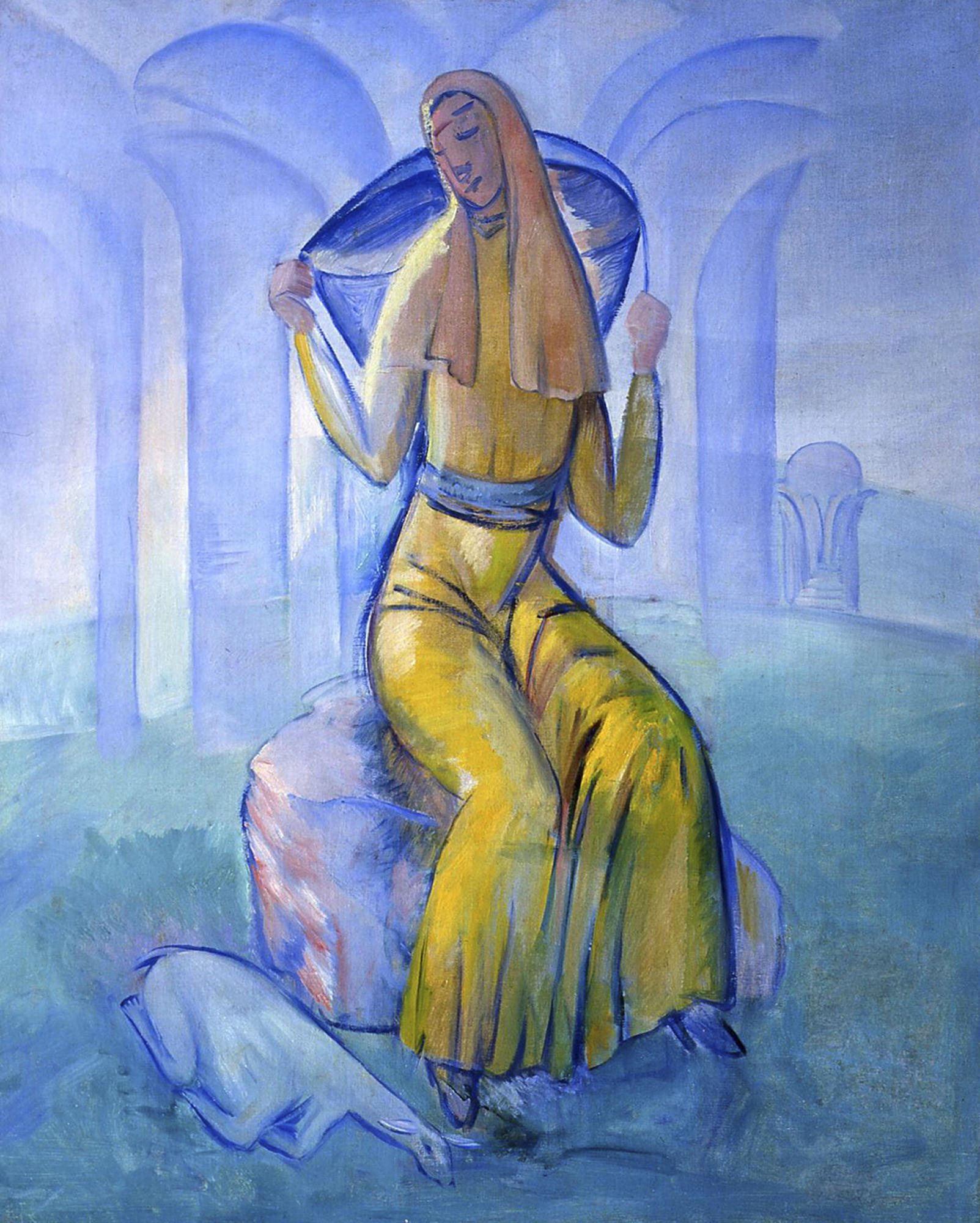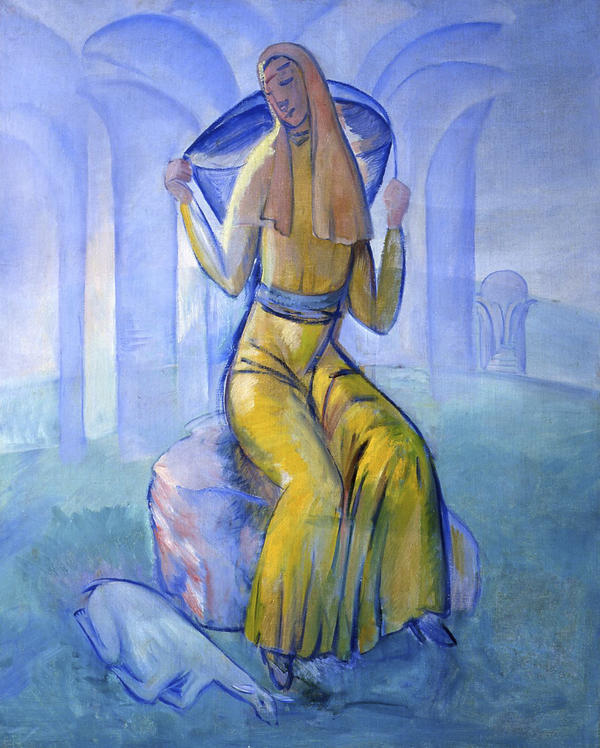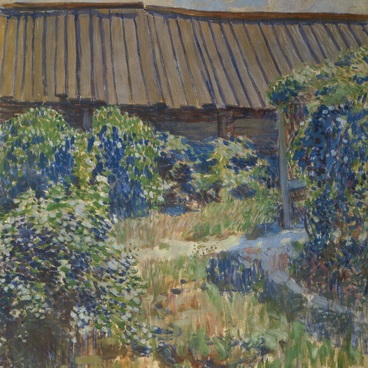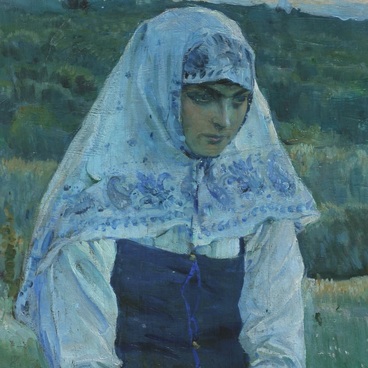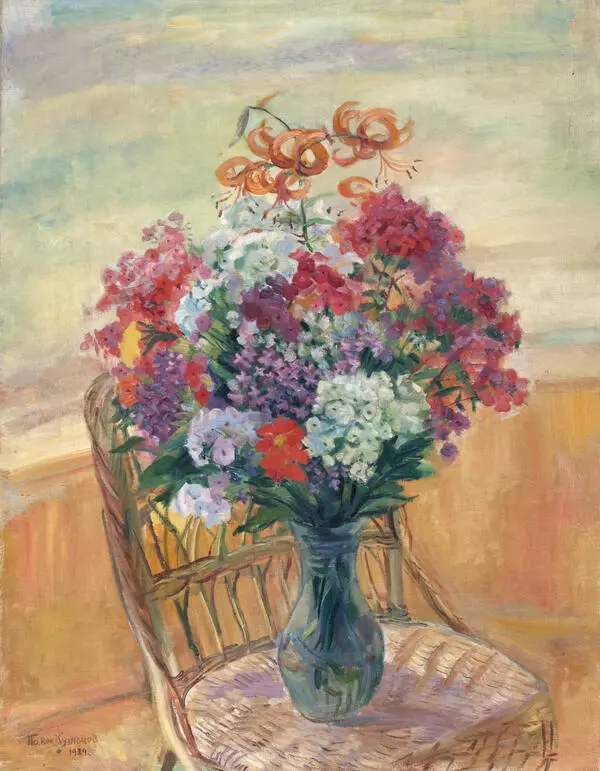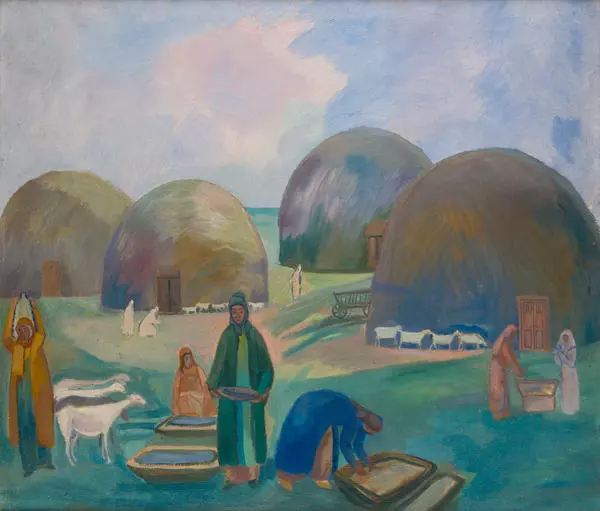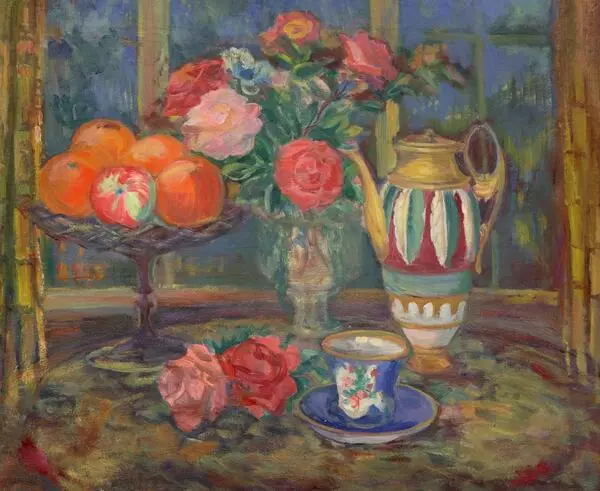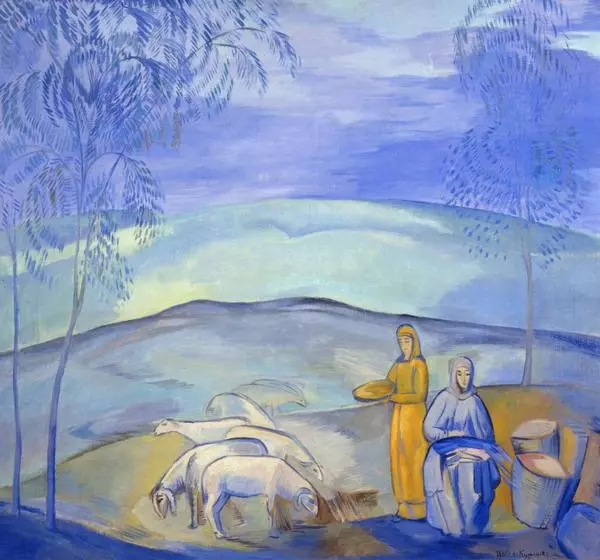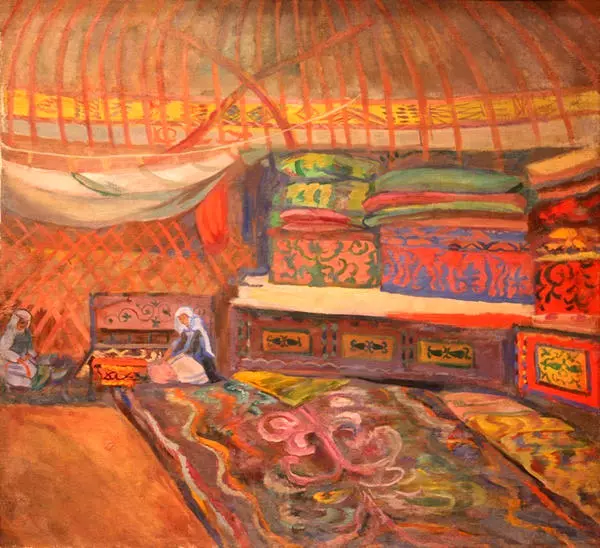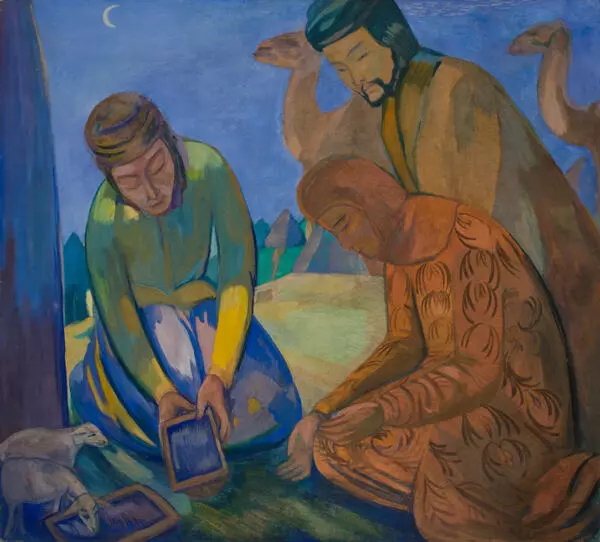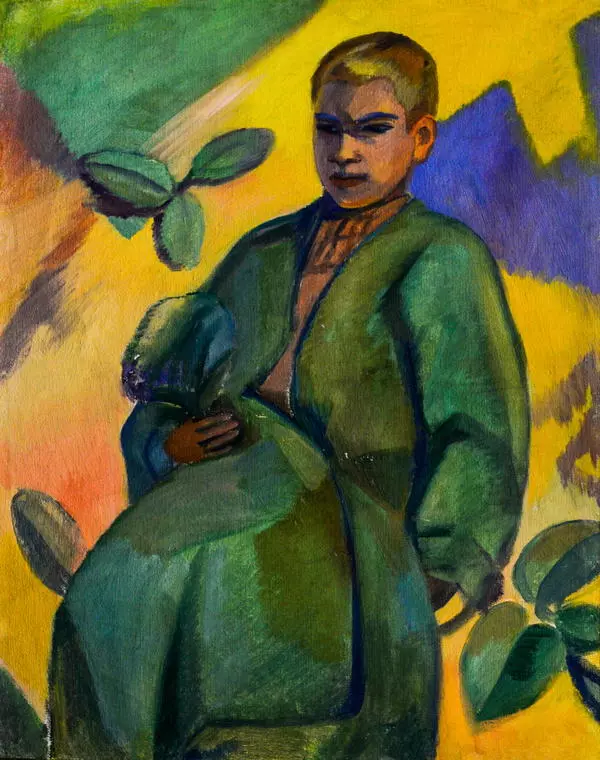Pavel Kuznetsov was born in Saratov in 1878, in the family of an icon painter. He was a member of Artists Association ‘Blue Rose’ which existed from 1902 to 1910. The association core was formed when its participants still studied at the Moscow School of Art, Sculpture and Architecture. Pavel Kuznetsov was the leader of the artist group. Same as many artists of his generation, Kuznetsov was guided in his art not by realist painting and not even by impressionists’ canvases, but by early stages of art development: ancient Russian icon painting, cheap popular prints (lubok), Oriental art.
Painters participating in Artist Association “Blue Rose” were especially inspired by works of Victor Borisov-Musatov who painted ancient Russian estates in his own lyrical style. His art followers borrowed his grey and blue and pastel pink palette and ideas of symbolism: they experimented with techniques, imported lyricism and mystery to the canvases, instead of showing specific life situations, seeked to create generalized poetic images. The group name — “Blue Rose” — appeared after the young artists’ exhibition under the same name that took place in 1907.
In early 1910s, Pavel Kuznetsov travelled over the trans-Volga steppes and Middle Asia. He brought from there new sketches and canvases distinguished by a bright color palette, simple and, at the same time, fantasy subjects. For the first time, Pavel Kuznetsov exhibited his ‘steppe’ or ‘Kyrgyz’ paintings in 1911, at ‘The World of Art’ exhibition.
Kyrgyz Woman with a Lamb was painted by Pavel Kuznetsov in 1914 when the association had already broken up. However, one can feel the canvas connection to the ‘Blue Rose’ aesthetics: the fluency of line, light color palette, an alloy of reality and fantasy. The girl on the canvas is devoid of any individual features, the background around her is symbolic: spectators see architectural elements not connecting into a single building. Though Pavel Kuznetsov took his subjects from daily life, they cannot be referred to the genre painting. In his whole steppe series, the artist tried to reflect ‘the unity of being of man and nature, labor, the human state of contemplative self-immersion’.
